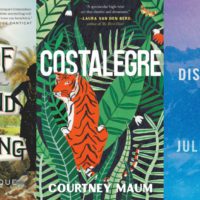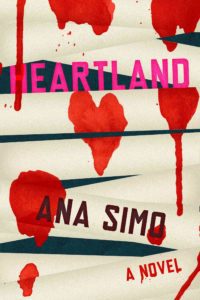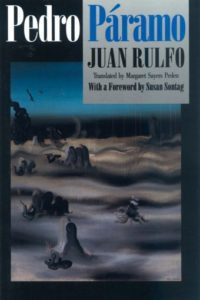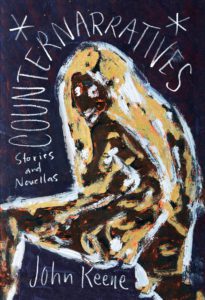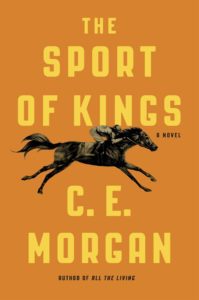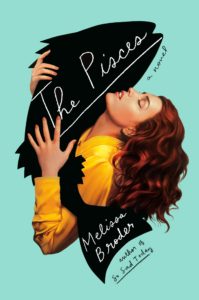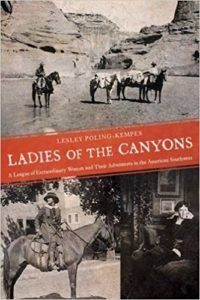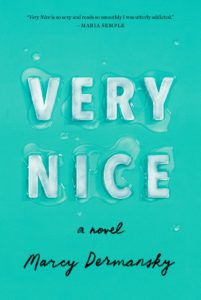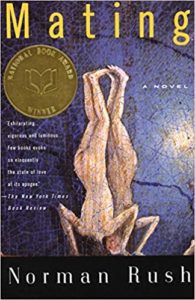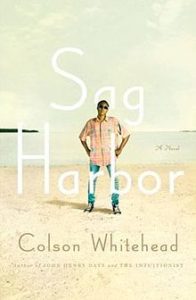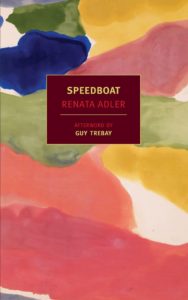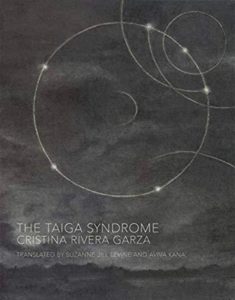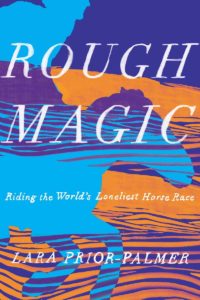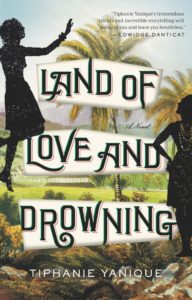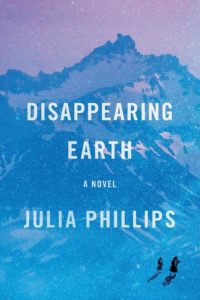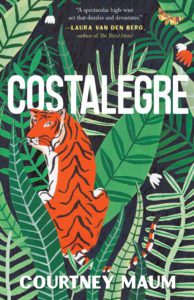Starting in mid-May, the Internet is aflame with summer reading lists that hail the books you can’t approach the beach without. There are thematic lists that you can accessorize against your summer travel plans like the careful choosing of a scarf, recommendations you can read in a single sitting on the plane to…. wherever the hell you’re going with the three minutes of vacation you’ve accrued after busting your butt and paying for your own health insurance all the livelong year.
A lot of people don’t get to take the summer vacations that these lists infer, nor do they have the resources to go somewhere ambitious with their free time. Luckily, there are a lot of books that provide both entertainment and a one-way ticket to somewhere incredible for the cost of a paperback. From multi-narrator epics to phantasmagorical monologues, this reading list is out-of-office soul food for your heart and mind.
***
Heartland by Ana Simo
If scorned lovers had their own country, it would be Ana Simon’s Heartland. At the age of eleven, this book’s unnamed narrator wins a prize for penning an accidently subversive piece of prose, which catapults her toward a writing career that she considers as a curse. Later in life, while she’s working a host of jobs to support the figurative cross upon her back, her lover falls for someone else, and naturally the only solution for our narrator is to murder the one that got in the way. (Or at least, to try.) Profane, hilarious, decadent, and bonkers, it’s a lesbian noir dystopian and a satirical call to arms that takes place in a Midwest we very rarely see.
Pedro Paramo by Juan Rulfo
Cross the revelry of Don Quixote with the hallucinatory weirdness of Alice and Wonderland, add a lot of dust, thirst, and a little heat stroke, and you have Pedro Paramo, one of the most revered books in the Mexican canon. If you like your one-horse towns haunted and your narrators unreliable (and maybe not totally alive?) hitch your cart to the only novel that Rulfo ever published.
Counternarratives by John Keene
A fever dream of detective stories, newspaper accounts, diary entries, and interrogation transcripts from the 1700s onwards crackle in this intensely realized hellscape of stories and novellas by the poet, translator, writer, artist, and MacArthur fellow John Keene.
The Sport of Kings by C.E. Morgan
All things are definitely not quiet on this Kentucky front, where race horses and racism, legacy and lineage, rage and propriety hoof through bluegrass and the dirty Southern mud. A Gothic tale of botched plans and moral decadence that will stay in your bloodstream far longer than any julep ever could.
The Pisces by Melissa Broder
Put down your Bukowski: no one is going to show you a truer, more erotic, or freakier LA than Melissa Broder, who takes her readers for a deep dive into a contemporary Venice filled with characters who are oversexed and undersexed, aquatic and divine.
Ladies of the Canyons: A League of Extraordinary Women and Their Adventures in the American Southwest by Lesley Poling-Kempes
If you think that Georgia O’Keefe was the only woman at Ghost Ranch, this book will set you straight. Meticulously researched and filled with delightful photographs, this book follows four upper class Victorian women who give up corsets and East Coast husband-hunting to heed the call of the American Southwest.
Zama by Antonio di Benedetto
It’s all fun and games until the gangrene sets in in this Argentinean classic about a disenchanted bureaucrat who’s finding that the whole “colonizing” thing a little overrated, as is his post in a remote town in Paraguay far away from his wife and sons.
Very Nice by Marcy Dermansky
I live in Connecticut, but I wish I lived in Marcy Dermansky’s Connecticut, a place where tasty food is always in the refrigerator and if you work well on your novel, you get to swim in a pristine pool in a bathing suit that someone else bought for you. This book is full of hot, hot messes who—thank goodness—don’t necessarily clean up.
Mating by Norman Rush
A listless anthropologist with a failing thesis is at the center of this dark comedy of manners that unfolds in pre-apartheid Botswana, where our heroine is falling for a dude who tells her he has located a paradisiacal society in the Kalahari where he is the only man. (Run, girl, run.) A smarter, deeper and far more sensitive prequel to Men Are from Mars, Women Are from Venus, this is an anti-romance romance that raises a lot of interrobangs about what men and women really want.
Sag Harbor by Colson Whitehead
A classic summer novel that upended the classic summer novel-genre, this is a story about misfits who want to fit in, aspirations and nostalgia, shame and shamelessness. With his unruly haircut, his penchant for lite FM radio stations, and his determination to outsmart (and out-test) the white kids at his prep school, Benji Cooper is a protagonist worth taking the ferry for.
Speedboat by Renata Adler
If you like books that make you feel like you are drunk, scantily clad, and at a fancy party with a bunch of people whose names you can’t remember with a sunburn that you got while you were reporting about civil rights for the New Yorker at some point in 1970, this is the book for you.
Bright Lines by Tanaïs (née Tanwi Nandini Islam)
Remember when summertime meant heat and sweat and getting some things right and some things wrong? Remember when summer meant sexual adventure? Tanaïs certainly does, and her sizzling debut about Bangledeshi teens grasping with identity and sexuality in 2003 blackout Brooklyn will release pheromones and dopamine alike.
The Taiga Syndrome by Cristina Rivera Garza
Poet and translator Daniel Borzutzky calls it “Apocalypse Now fused with the worlds of Clarice Lispector and Jorge Luis Borges,” bookseller Mark Haber says it’s “a detective novel directed by David Lynch and narrated by Bolaño,” and I say, who in the hell wouldn’t want to read a collaboration between David Lynch and Bolaño? This is a fairy tale, a horror story, a detective novel, and a searing meditation on identity and resistance from a Mexican author who works as a professor on both sides of the border.
Rough Magic: Riding the World’s Loneliest Horse Race by Lara Prior-Palmer
As an equestrian myself, I have to admit that the author’s unpreparedness and naivety as she embarked upon the world’s longest, toughest horse race in the dizzying altitudes of Mongolia made me want to scream (neigh?), but the narrator’s peculiar syntax, unabashed youth, and victory against a hell of a lot of odds kept the book in my happy hands.
Land of Love and Drowning by Tiphanie Yanique
If you like your epics more sensual than “sweeping,” this magical stunner about three generations of a mysterious Virgin Islands family is for you. It starts with three peculiar children who are orphaned by a ship sinking into the Caribbean and it continues to explore the powerful themes of identity, loyalty, and curses—both real and imagined—from there. Transportive and thought-provoking, as all journeys should be.
Disappearing Earth by Julia Phillips
A miracle of structure, premise, and content, this ingenious debut spins out the narratives of twelve different women over a year to indirectly explore the way the disappearance of two young white girls unearths the suppressed racial tensions of a Russian peninsula. Reindeer herders, ballerinas, avalanches, volcanoes… Phillips’s luring writing will transform Kamchatka from a place you’ve never heard of to a place you never want to leave.
And to close out this wonderful list, we just had to include Courtney’s new novel, Costalegre, out now from Tin House Books! – Ed.
Costalegre by Courtney Maum
It is 1937, and Europe is on the brink of war. In the haute-bohemian circles of Austria, Germany, and Paris, Hitler is circulating a most-wanted list of “cultural degenerates”―artists, writers, and thinkers whose work is deemed antithetical to the new regime. To prevent the destruction of her favorite art (and artists), the impetuous American heiress and modern art collector, Leonora Calaway, begins chartering boats and planes for an elite group of surrealists to Costalegre, a mysterious resort in the Mexican jungle, where she has a home. The story of what happens to these artists when they reach their destination is told from the point of view of Lara, Leonora’s neglected fifteen-year-old daughter, who has been pulled out of school to follow her mother to Mexico. Forced from a young age to cohabit with her mother’s eccentric whims, tortured lovers, and entourage of gold-diggers, Lara suffers from emotional, educational, and geographical instability that a Mexican sojourn with surrealists isn’t going to help. But when she meets the outcast Dadaist sculptor Jack Klinger, a much older man who has already been living in Costalegre for some time, Lara thinks she might have found the love and understanding she so badly craves.
